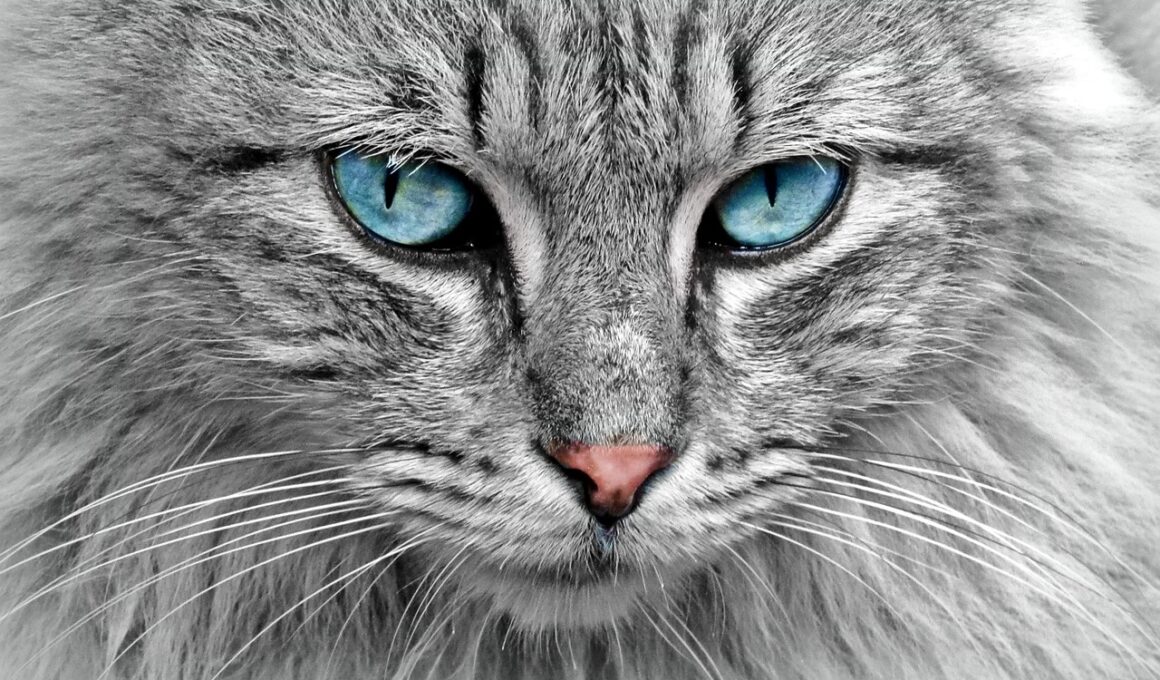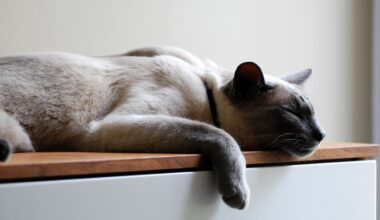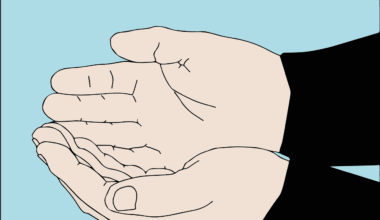Choosing the Right Flash Equipment for Cat Photography
Photography with cats can be an exciting and rewarding experience, especially when using flash. Proper flash equipment enhances images by providing the necessary illumination that captures your cat’s personality and quirks. Choosing the right flash plays a vital role in succeeding with cat photography. Consider your shooting environment, as natural ambient light may not always be sufficient. A good flash allows you to take pictures in dim settings, ensuring that every shot is well-lit. Look for a flash unit that offers adjustable power settings, enabling you to control the light output according to the surrounding conditions. You might also want to explore the option of a flash diffuser. A diffuser softens the light, minimizing harsh shadows and providing a more natural look to your photographs. Additionally, built-in bounce options can provide further versatility. Ultimately, the flash equipment you invest in should be lightweight and easy to handle to keep your photographing sessions enjoyable and stress-free. With proper tools and techniques, capturing stunning images of your feline friends is definitely achievable.
Types of Flash Equipment
When it comes to cat photography, there are various types of flash equipment to consider. The most common options include external speedlights, studio strobes, and built-in camera flashes. External speedlights are best for their versatility and portability. They attach to your camera’s hot shoe and can be adjusted to different angles, allowing you to bounce light off walls or ceilings, creating a softer glow. Studio strobes are typically more powerful but require a complete setup, making them less practical for casual pet photography sessions. Built-in camera flashes can be convenient, but they produce harsh light and may not provide the best outcome for capturing cute feline expressions. A great option is to utilize off-camera flash, which grants more control over the lighting direction, enhancing your photography experience. Whichever type you choose, ensure that it suits your unique style and approach. Don’t forget to factor in your budget when making a decision, as high-quality equipment can vary significantly in price. Research various brands and models to find an option that fits both your creative needs and financial considerations.
For many photographers, understanding the flash settings can be quite challenging, especially when capturing the elusive nature of cats. To maximize your results, it’s essential to familiarize yourself with your flash’s various settings. Start by learning about the different power levels available and how they impact exposure. High power settings may be necessary when photographing cats in dark environments, while lower settings may suffice in brighter conditions. Experimenting with these levels can dramatically affect your photographs’ quality. In addition, learn how to adjust the flash duration and sync settings. The sync speed is crucial for capturing fast-moving subjects like cats where even a fraction of a second can make the difference between a perfectly timed moment and a blurry image. Taking the time to master these settings will boost your confidence and enable you to execute your vision beautifully. Moreover, it’s wise to practice taking photos with flash in advance, even when you don’t have a subject. This way, you’ll develop an internal understanding of the equipment and how the modifications affect your shots before working with your beloved felines.
Ambient Light and Flash Usage
Understanding the relationship between ambient light and flash usage is key to achieving great cat photographs. During an outdoor session, the available natural light can greatly influence the effectiveness of your flash. It’s essential to assess the lighting conditions before shooting and adjust your flash settings accordingly. If you find yourself in bright daylight, you may have to dial the flash down significantly so that the illumination does not overpower the scene. On the other hand, during low-light situations, you can increase the flash output to help illuminate your feline friend effectively in dark corners. Bouncing flash off nearby surfaces can help create a beautiful, diffused effect, reducing harsh shadows and keeping the mood upbeat. Combining ambient and flash lighting can deliver stunning results, where the background and the subject come alive harmoniously. Balancing these light sources skillfully can elevate your photography to new levels. Don’t be afraid to experiment with different approaches, such as illuminating only one side of the scene for a more dramatic effect. Learning to utilize both types of light effectively will enhance your artistic choices while photographing cats.
Another crucial aspect of using flash with cats is mastering the timing of your shots. Felines are known for their sudden movements and unpredictable behavior, requiring quick reflexes from photographers. Practicing your timing with flash photography is vital, especially when teaching your cat to interact during the shoot. Work on your cat’s attention span by using treats or toys to engage their focus. As you prepare to take a shot, visualize the moment you want to capture, anticipating precisely when to click the shutter button. A well-timed shot can immortalize an amusing expression or an acrobatic feat. Utilizing high-speed synchronization on your flash can often enhance the ability to freeze moments in time, which is critical for active cat photography. If your flash supports this feature, explore its settings and find the optimal configuration for your shooting style. Observing your subject’s behavior can provide clues to when pivotal moments are likely to occur. Developing this instinct will help you continually improve your photography skills and build a stunning portfolio of your beloved pets.
Investing in Accessories
While the right flash is vital in cat photography, investing in accessories can profoundly enhance your experience. Essential accouterments include a sturdy tripod for stability and a reliable light meter to aid in accurate exposure readings. A tripod can help stabilize your camera, especially in low-light situations or when using slower shutter speeds, preventing blurry images due to hand shake. A light meter helps measure ambient light intensity, assisting in adjusting the flash’s power accurately. Moreover, consider adding accessories such as reflectors and diffusers, which can significantly improve the quality of light your flash emits. Reflectors help bounce light into shadowed areas, while diffusers soften harsh light sources, creating a pleasing aesthetic in your photos. Look for portable options that are lightweight and adjustable, making it easy to transport and assemble while on the go. Some photographers also suggest using color gels on your flash to add a unique dimension to your cat photographs. These accessories work hand-in-hand with your flash unit to open up new realms of creativity and artistic expression in your photography.
Lastly, post-processing plays an equally important role in enhancing your flash photographs of cats. After the shooting session, utilize photo editing software to fine-tune lighting, exposure, and color balance. Adjusting these elements can help bring out the richness in your images, making them more visually striking. Cropping can eliminate distractions from the background, focusing viewers’ attention on the cat and its charming antics. It’s also beneficial to understand how to manage shadows created by flash use. Employ tools such as the brush or gradient filters to softens stark lighting contrasts. Don’t shy away from experimenting with different filters and techniques, as they can yield both spectacular results and exciting surprises. Finally, consider utilizing online platforms to get feedback on your edited images from the photography community. Engaging with fellow enthusiasts can provide fresh perspectives while also fueling your motivation to continue improving your craft. By integrating both shooting and editing techniques effectively, you will create memorable works of art showcasing your beloved feline friends for years to come.
Conclusion
In conclusion, choosing the right flash equipment for cat photography can greatly impact your results. Equip yourself with a solid understanding of the various flash types and their corresponding settings. Remember that utilizing ambient light alongside your flash can also create stunning photographs. Mastering the timing of your shots will allow you to capture those fleeting feline moments. Consider building your toolkit with useful accessories, as they can provide great flexibility in your photography sessions. Moreover, don’t overlook the importance of post-processing in bringing your images to life. Focus on blending technical knowledge with creative expression in your cat photography. Ultimately, practice is key to improving your skills, and it is essential to keep experimenting with different styles and techniques. Engage with the photography community for tips and critiques to foster your growth as a photographer. Be patient and persistent in your quest for the perfect shot of your furry friends. The joy and satisfaction that come from capturing their unique personalities will keep you coming back for more. With dedication and the right tools, you will elevate your cat photography to a professional level.


